Ghughra also known as Karanji and Gujia, is a sweet made with Maida flour and stuffed with Khoya and other ingredients. This Indian sweet recipe is made during Indian festivals like Holi and Diwali.
When I was a kid, my mom used to make a huge variety of snacks and sweets for Diwali.
Gujia, Chakli, Dal masoor, Gulab Jamun, Mathia, Fafda, Cholafali are her signature dishes and all of these are made by her on Diwali.
But out of all those recipes, Gujia aka Ghughra made by her was the best.
I learned this recipe from my Mom.
What is Ghughra | Gujia | Karanji?
Ghughara is filled with a mixture of dry fruits, khoya and to add a grainy texture, a little suji/semolina. Ghughara is a special dessert usually made during Diwali and holi. Several regional cuisines in India feature dishes similar to Ghughra, but with different fillings.
It is also called Pedakiya in Bihar, Karanji in Maharashtra, Karachika in Tamil Nadu, Karjikayi in Andhra Pradesh and Karnataka, Gujiya in the Northern state of India.
In Goa, Goan Hindus prepare it on the occasion of Ganesh Chaturthi and are known as Nevris.
Like the names are different from region to region, the method of making this recipe is also different.
In some region, they make it with only sooji and nuts, some make it with coconut and sooji, etc.
Today I am sharing Mawa Gujia recipe which is famous in Gujarat.
Without making and eating Ghughara, Diwali is incomplete for the Gujarati community.
Ingredients required to make this Indian Diwali Sweet.
For stuffing
- Mawa/khoya
- Sooji
- Sugar
- Crushed dry-fruits (I have used Cashew, almonds, and Pistachios)
- Cardamom powder
- Ghee
For Dough
- Maida
- Milk
- Ghee
- Water (If required)
Other ingredients
- Oil/ghee for frying
- Silver varq, saffron and some slivered nuts for garnishing (optional)
How to make Gujia | Ghughra? Step by step process.
Step – 1: Stuffing
Heat 1 tablespoon ghee in a pan. Add khoya/Mawa in ghee and saute it for a minute over medium heat. Remove it in a big mixing bowl and keep it aside. (Photo 1 to 3)
Again heat 1 tablespoon ghee in a pan. Saute sooji/ in ghee for a minute or until fragrant over medium heat. Keep it aside. (Photo 4 to 6)
Take Roasted Mawa in a Big mixing bowl, add Roasted Rava, grounded dry fruit, sugar and cardamom powder. Mix it very well. Let the mixture cool down completely. (Photo 7 to 10)
Step – 2 Prepare dough
Take maida in a bowl. Add ghee and mix it very well. Now, add milk and knead a soft dough. Add water if required. (Photo 11 to 14)
Cover it with a wet muslin cloth and let it rest for about 15 to 20 minutes.
Divide the dough into 25 equal parts and cover it with a wet cloth.
Step – 3 Stuffing the Gujia
Take one ball and roll it about the size of a puri. (photo 15)
Place stuffing in the middle of the rolled puri. (Photo 16)
Close the puri half-moon shape. (photo 17 – 18)
Keep twisting the ghughra around the edges. (refer a video in recipe card) (Photo 19 and 20)
Alternate Method :
If you don’t know how to design the edges, use a fork to seal the edges. (refer video)
Prepare remaining ghughras. Cover prepared ghughra with a damp cloth.
Step – 4 Frying
Heat oil or ghee in a pan. Fry Ghughras over a low flame until light golden brown in color. (Photo 21 to 23)
Step – 5 How to store?
Let them cool down. Once it is cold, place them in an airtight container.
As it is made with Mawa, the shelf life is very short. It stays fresh up to 8 to 10 days. max.
Or you can keep them in the refrigerator, it will stay good for a month. Whenever you are ready to eat, take out from the fridge, warm it up a bit in the microwave and enjoy.
Notes and Pro-tips –
- I used homemade Khoya to make this recipe, you may use store-bought one too.
- This recipe can also be made with only sooji. Skip the mawa and use the same amount of sooji. But I would highly recommend to make it with Mawa once. ghughra made with mawa tastes rich and scrumptious.
- If you don’t know how to seal the edges and shape them, make sure to buy gujiya mould from the market beforehand or order it online.
- For the filling you may use any dry fruits of your choice.
- Make sure to use well-crushed nuts. Or else the puri (Outer part of ) will break while moulding.
- My family loves dry-fruits in Ghughra, so I have added more. But you may add less and add more Sooji.
- Use sugar according to your taste.
- I have used flavorless oil for frying. Traditionally ghee is used to fry them. You may use oil or ghee, your preference.
- Frying these is a time taking process. Make sure to fry them on a slow to medium hot oil/ghee. You don’t want to fry them on high heat. They will be browned from outside but will be raw from inside and the outer part will be chewy.
- Don’t overcrowd the frying pan, add only 3-4 gujia at a time.
- Don’t press the gujia while frying or they’ll break and the filling will mix in the oil resulting in a big mess.
- Always keep the fried gujiya on a kitchen towel for few seconds to soak up any excess oil and let gujiya firm up in the air.
- Make sure to seal the gujiya properly. Or else it will break in the oil. If they open while frying, their filling will come out and spoil the entire batch.
- If it breaks while frying, strain the oil/ghee using a metal strainer and then use it for frying.
- The dough must be covered with a moist cloth at all time.
- After shaping the Gujia, keep them covered with a damp cloth.
- You can easily half or double this recipe.
- The stuffing can be kept in the fridge for up to a week. or you can freeze it for a month or two.
Ghughra
Ingredients
For stuffing
- 1 cup Mawa/khoya
- ¼ cup Sooji
- ¾ cup Sugar
- 1 cup Crushed dry-fruits I have used Cashew, almonds, and Pistachios
- ½ teaspoon Cardamom powder
- 2 tablespoon Ghee
For Dough
- 1 ¼ cup Maida
- ½ cup Milk
- 1 tablespoon Ghee
- Water If required
Other ingredients
- Oil/ghee for frying
- Silver varq saffron and some slivered nuts for garnishing (optional)
Instructions
Step - 1: Stuffing
- Heat 1 tablespoon ghee in a pan. Add khoya/Mawa in ghee and saute it for a minute over medium heat. Remove it in a big mixing bowl and keep it aside.
- Again heat 1 tablespoon ghee in a pan. Saute sooji/ in ghee for a minute or until fragrant over medium heat. Keep it aside.
- Take Roasted Mawa in a Big mixing bowl, add Roasted Rava, grounded dry fruit, sugar and cardamom powder. Mix it very well. Let the mixture cool down completely.
Step - 2 Prepare dough
- Take maida in a bowl. Add ghee and mix it very well. Add milk and knead a soft dough. Add water if required.
- Cover it with wet muslin cloth and let it rest for about 15 to 20 minutes.
- Divide the dough into 25 equal parts and cover it with wet cloth.
Step - 3 Stuffing the Gujia
- Take one ball and roll it about the size of a puri.
- Place stuffing in the middle of the rolled puri.
- Close the puri half-moon shape. Keep twisting the ghughra around the edges. (refer a video in recipe card)
- Alternate Method :
- If you don't know how to design the edges, use a fork to seal the edges. (refer video)
- Prepare remaining ghughrs. Cover prepared ghughra with a damp cloth.
Step - 4 Frying
- Heat oil or ghee in a pan. Fry Ghughras over a low flame until light golden brown in color.
Step - 5 How to store?
- Let them cool down. Once it is cold, place them in an airtight container.
- As it is made with Mawa, the shelf life is very short. It stays fresh up to 8 to 10 days. max.
- Or you can keep them in the refrigerator, it will stay good for a month. Whenever you are ready to eat, take out from the fridge, warm it up a bit in the microwave and enjoy.
Video
Notes
- I used homemade Khoya to make this recipe, you may use store-bought one too.
- This recipe can also be made with only sooji. Skip the mawa and use the same amount of sooji. But I would highly recommend to make it with Mawa once. ghughra made with mawa tastes rich and scrumptious.
- If you don't know how to seal the edges and shape them, make sure to buy gujiya mould from the market beforehand or order it online.
- For the filling you may use any dry fruits of your choice.
- Make sure to use well-crushed nuts. Or else the puri (Outer part of ) will break while moulding.
- My family loves dry-fruits in Ghughra, so I have added more. But you may add less and add more Sooji.
- Use sugar according to your taste.
- I have used flavorless oil for frying. Traditionally ghee is used to fry them. You may use oil or ghee, your preference.
- Frying these is a time taking process. Make sure to fry them on a slow to medium hot oil/ghee. You don’t want to fry them on high heat. They will be browned from outside but will be raw from inside and the outer part will be chewy.
- Don’t overcrowd the frying pan, add only 3-4 gujia at a time.
- Don’t press the gujia while frying or they’ll break and the filling will mix in the oil resulting in a big mess.
- Always keep the fried gujiya on a kitchen towel for few seconds to soak up any excess oil and let gujiya firm up in the air.
- Make sure to seal the gujiya properly. Or else it will break in the oil. If they open while frying, their filling will come out and spoil the entire batch.
- If it breaks while frying, strain the oil/ghee using a metal strainer and then use it for frying.
- The dough must be covered with a moist cloth at all time.
- After shaping the Gujia, keep them covered with a damp cloth.
- You can easily half or double this recipe.
- The stuffing can be kept in the fridge for up to a week. or you can freeze it for a month or two.
- This recipe is updated, origanally published on October 16, 2014
Nutrition
Warm Regards,
Dhwani.











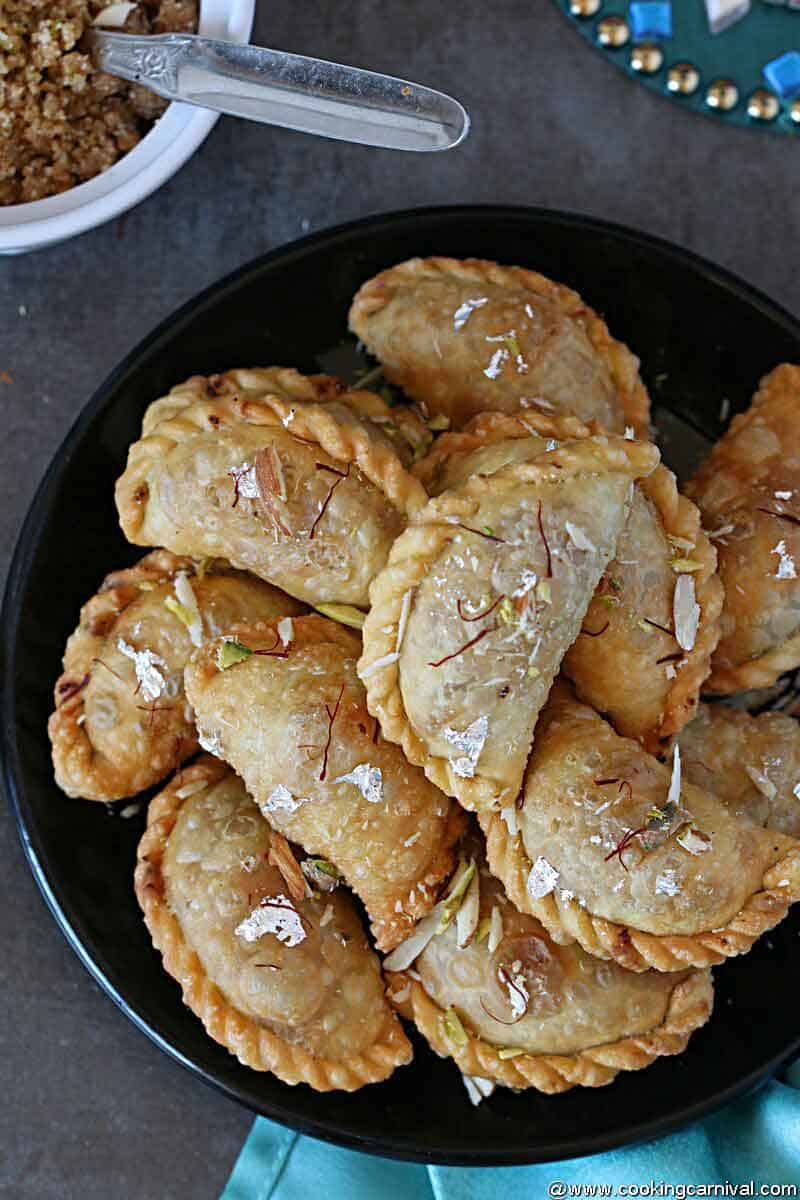


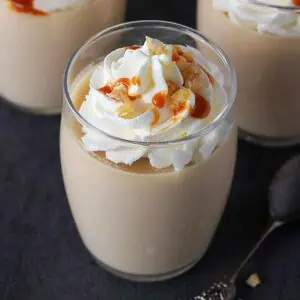
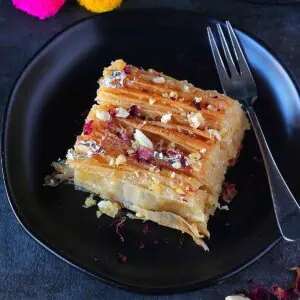
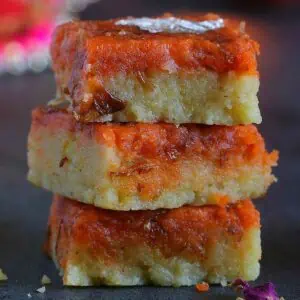
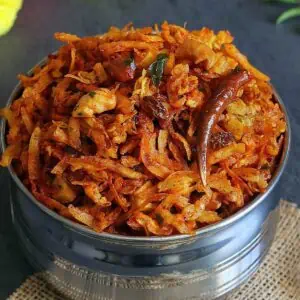

Thanx dhwani for sharing d video… v v useful…. wil sure try tht..
Thank you Ami….
I like this sweet very much. Yum!!
Thank you Antonet Roajer visiting us !!
very nice recipie
Thank you Leena 🙂
What a detailed explanation on making these beauties.. loved the shape of it too.. You are a pro and the pictures are just beautiful.. My mom always makes it with coconut and suji but this time I will try adding mawa as per your suggestion 🙂 thank you
Thanks, Sushma! I hope you like this version. 🙂
The video says 1/3 cup soji; but your written recipe says 1/4 cup soji. Which is correct?
Hi Navdha!
Take 1/3 cup. Sorry for the confusion.
Very easy to follow recipe.
However I did find the filling to be less sweet and I had too many bubbles on the crust despite frying on low flame.
How do you avoid bubbles and do you need to dip the Gujiyas in sugar syrup to get the sweetness?
Thanks.
1. You can add more sugar, sweetness is completely dependent on your liking.
2. Next time, reduce the water quantity and then fry the gujiya and see.
3. You don’t need to dip them in sugar syrup.
Thanks for sharing this recipe. This is exactly how my Dadi used to make it. So I’m going to give it a try.
Hope you like it!